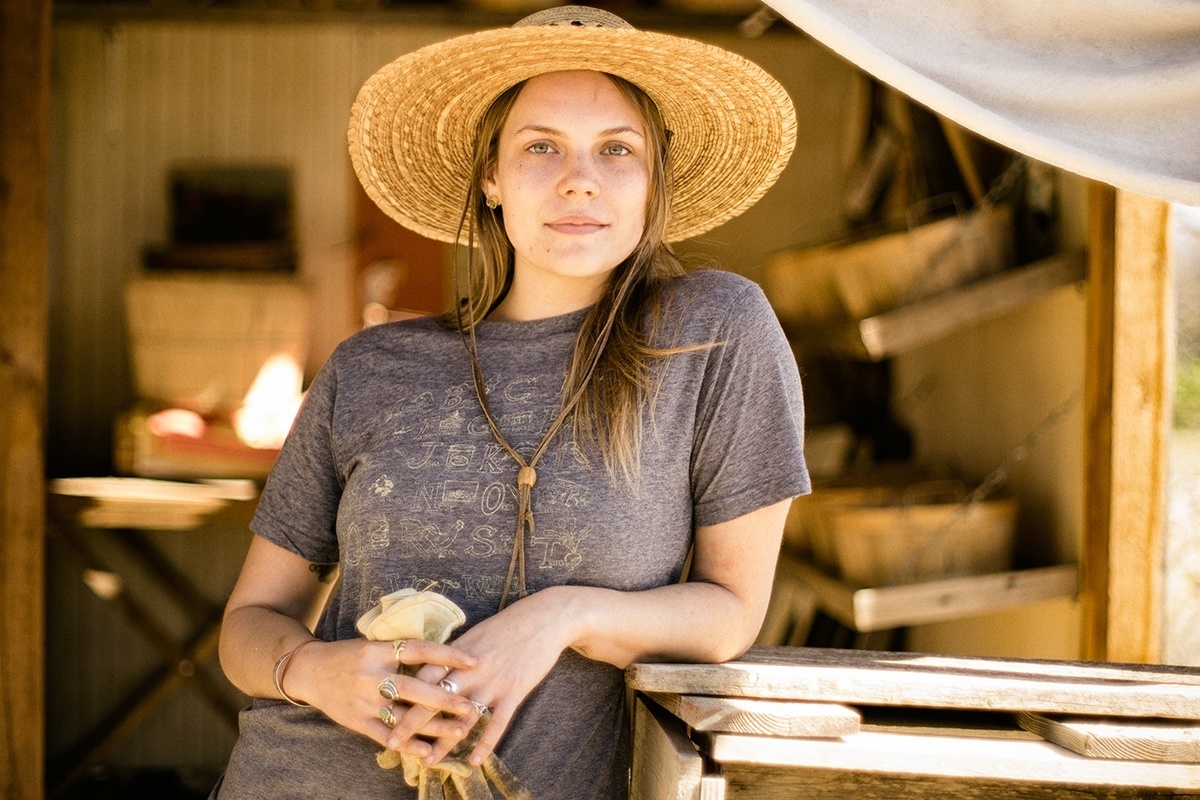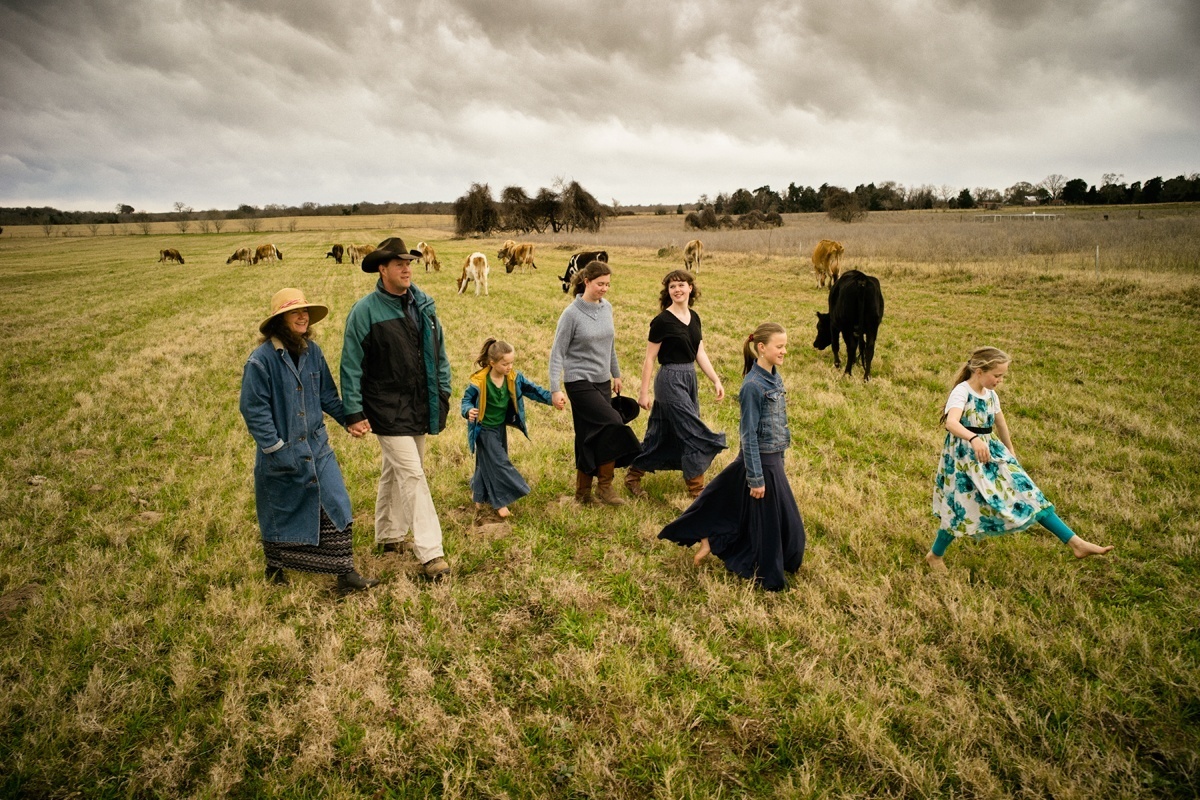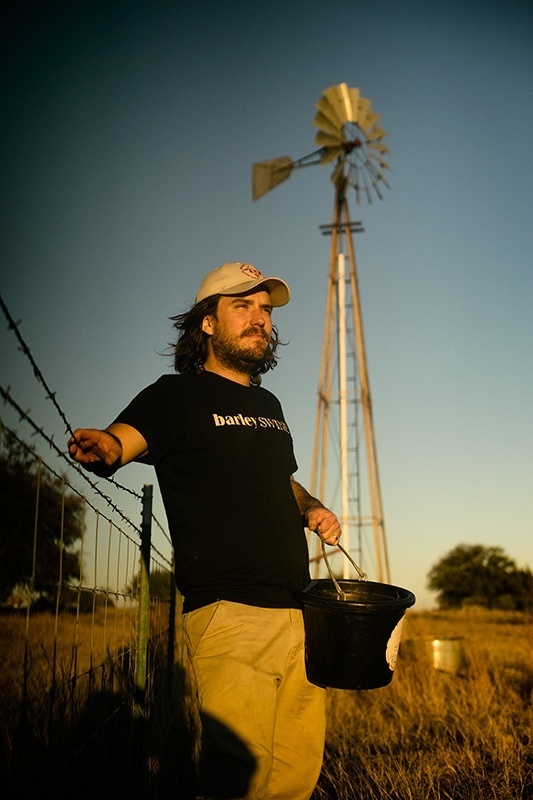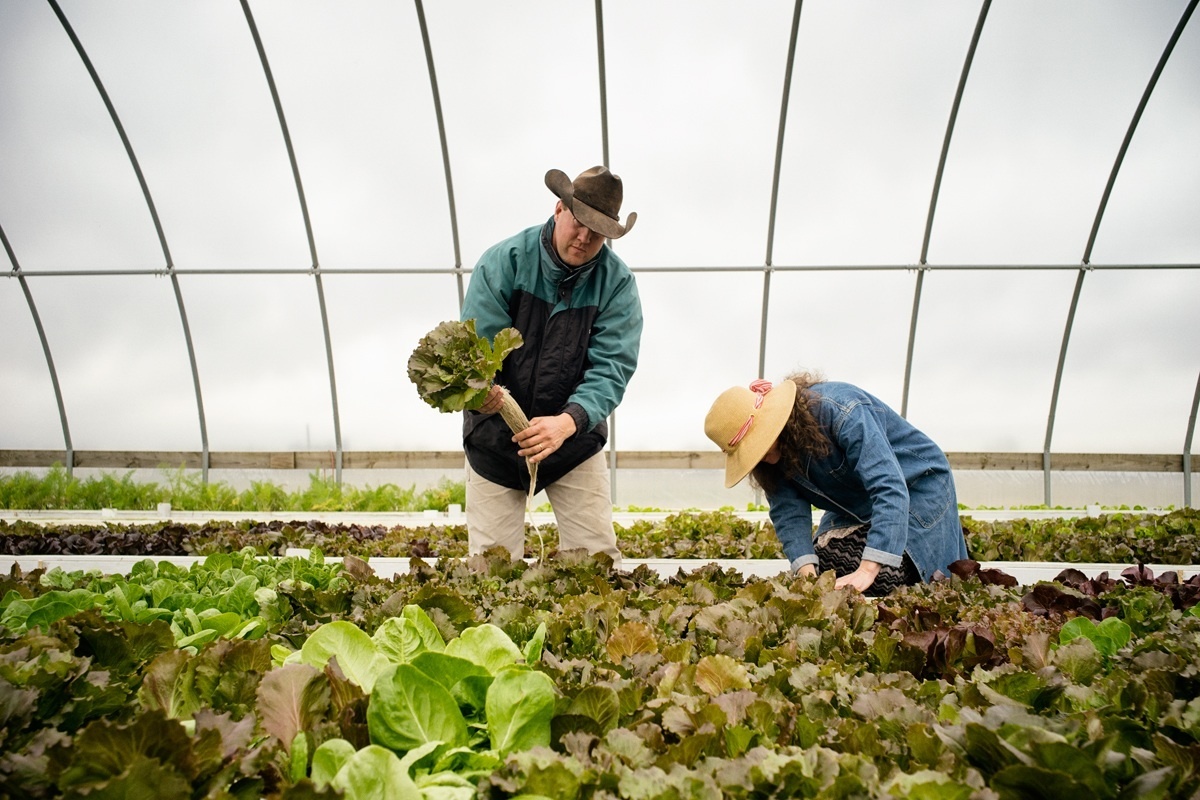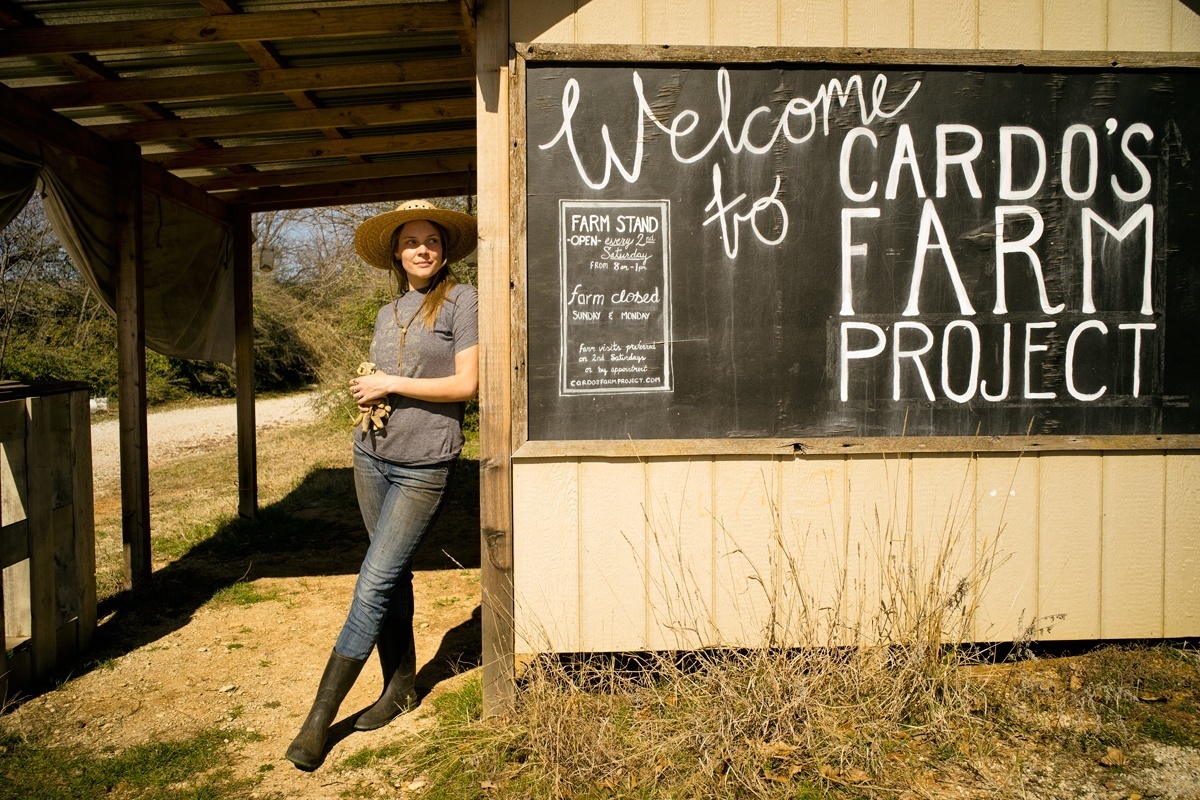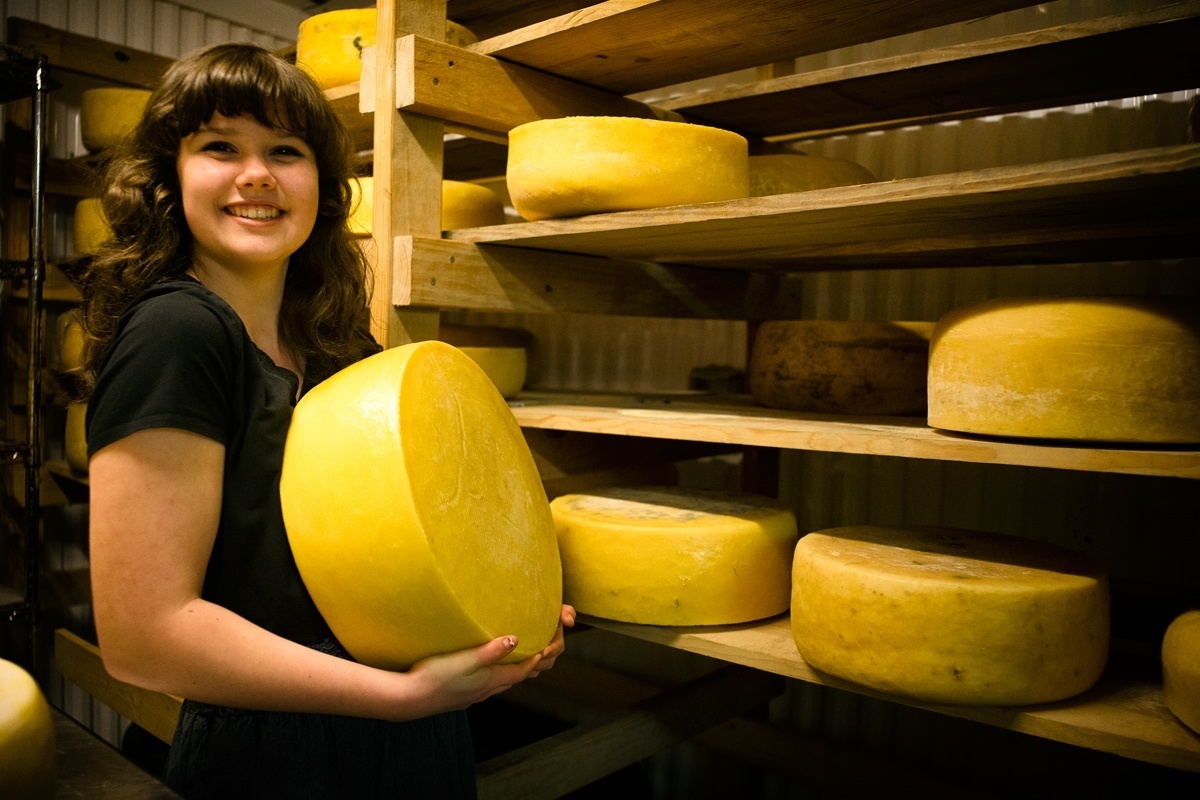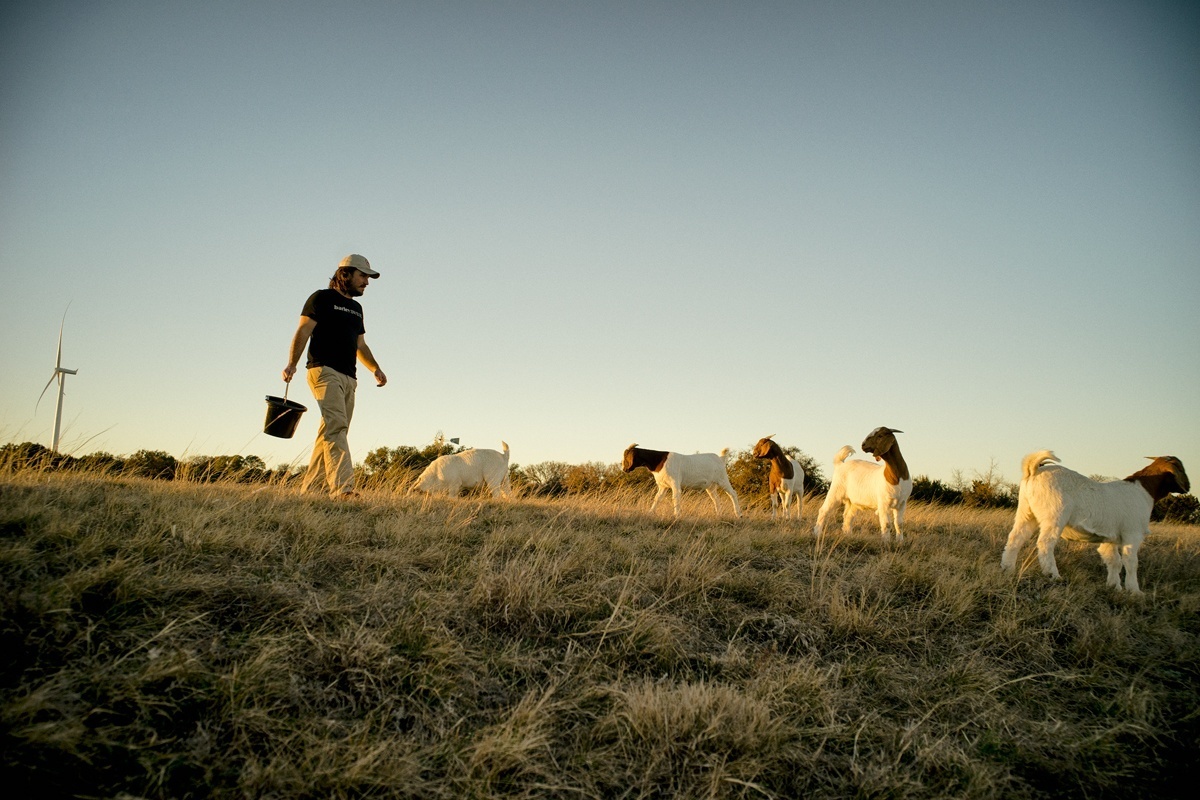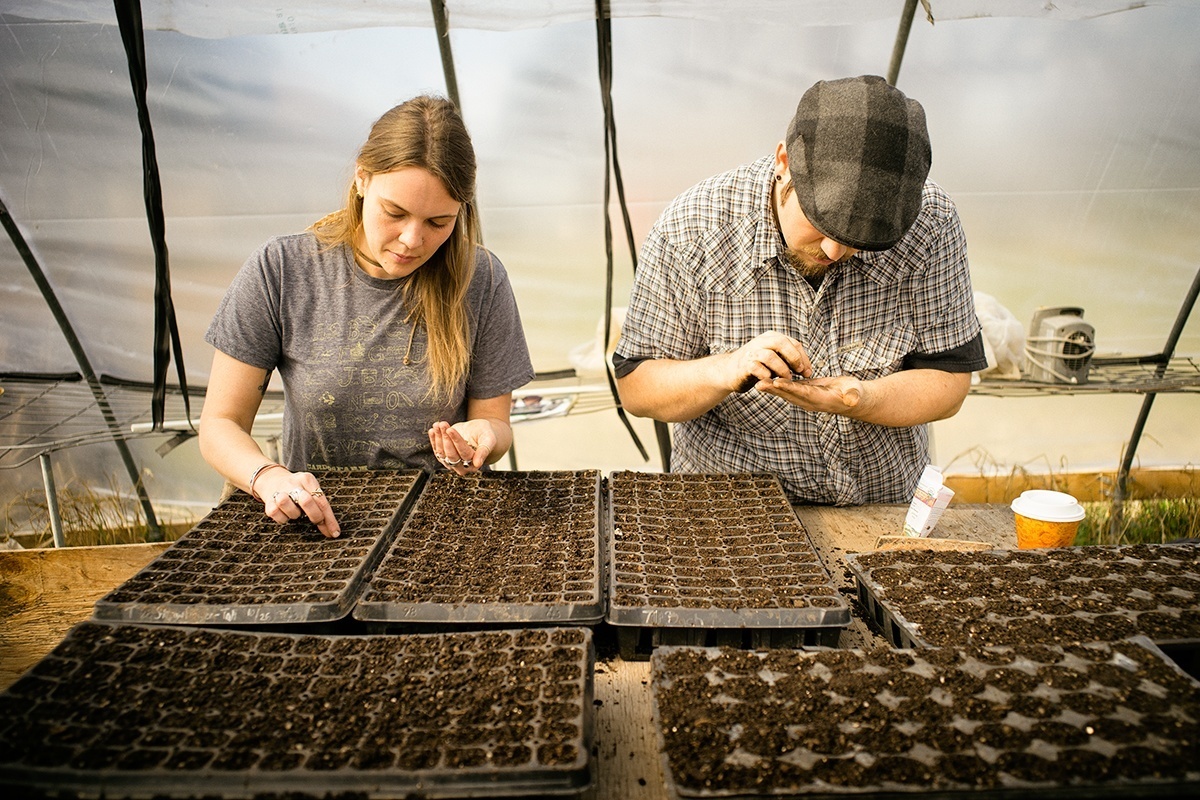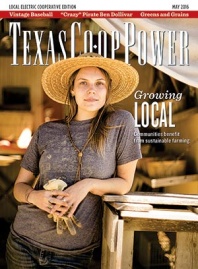While a sophomore at Texas State University in 2003, Ty Wolosin was treated for thyroid cancer. The weight he gained as a result inspired him to eat a healthier diet.
“I started thinking about the source of my food and wondering if I really needed blueberries from Chile in November,” Wolosin says. He decided to try living off the land in Mills County, where his mother and stepfather, James and Janice Wilson, raised goats and cattle.
He took over the family business in 2008, turning the operation into a retail farm and, in 2009, moved to land in Comanche County. He sold vegetables and eggs at farmers markets in Dallas and Austin. Then severe drought forced the family to butcher about half of its goat herd. “We had to figure out what to do with all that meat, which spurred me to learn more about goat as a sustainable source of protein,” Wolosin says.
Windy Hill Farm now sells grass-fed goat meat directly to restaurants, along with eggs laid by chickens raised in pastures and a selection of vegetables fertilized with seaweed and manure.
Wolosin is part of a new breed of young farmers cropping up—pun intended—across Texas. “There has been an explosion in demand from consumers for real, truly local products from real, local farms,” says Evan Driscoll of the Texas Young Farmer Coalition, an organization that helps its members network, exchange ideas and become better at what they do. “That demand has made possible a new model of truly sustainable farming operations.”
In the Heart of Texas Electric Cooperative service area, where agriculture remains a major player, General Manager Rick Haile has noticed changes. “We have a couple of dairies that sell direct and are going back to the natural, organic approach,” he says. “That is a plus for people in the community. It keeps it in the community and helps some of the smaller family farms to survive.”
Ben and Alysha Godfrey have degrees from Texas A&M University, his in agricultural development and hers in scientific nutrition. They started Sand Creek Farm in Cameron because they wanted to raise their children in the country.
“It occurred to me that farmers were pushed too hard to try and make a profit,” Ben Godfrey says. “You have someone you know in almost every area of your life: your doctor, lawn man, mechanic. You go to your accountant twice a year. But you eat three times a day and have no idea where your food comes from. That notion struck us, and we started doing research and realized we had to change what we were doing.”
The Godfreys, members of Heart of Texas EC, raise 100 percent grass-fed dairy and beef cows, pastured pork and chickens, and organic vegetables. Nothing is wasted, and everything is connected on the farm. Whey left over from making cheese is fed to the pigs, and the pigs and chickens consume unused milk, unsold vegetables and culls. Rotating the cows among grazing areas concentrates their manure and improves the soil for raising produce. Cover crops add nitrogen to the soil and provide food for the cows.
Most of the Godfreys’ products are sold through an approach known as community-supported agriculture, or CSAs, in which individuals pay in advance for a share of whatever is produced. Members or shareholders typically receive a box or bag of produce and other items, usually weekly during the growing season.
Tremendous infrastructure exists for modern agriculture, Ben Godfrey says, but those who want to do something different often feel as if they are swimming upstream. Many of them deal with that challenge by banding together. In early 2015, he started Sustainable Farm Supply, a website offering supplies, such as horse-drawn equipment, for sustainable farms. Wolosin partners with other farms to meet the demand for goat and lamb.
“Partnering and co-ops have been a utility of farming and ranching forever,” Wolosin says. “Look at the cotton and grain industries; they knew it would be cheaper to own the mill together. That’s kind of what we’re doing with goats. A lot of farmers aren’t interested in driving to Austin every week and talking to chefs like I do, so I’ve become a co-op distributor in a way.”
Similarly, Austin-based Vital Farms collects, processes and distributes eggs from about 60 family farms. These farms follow strict standards for how often chickens are rotated on pastureland and the minimum amount of space—108 square feet per bird—needed for the land to recover between rotations. “We help give the farmers what they need to run a sustainable practice that does no harm to any party involved—land, chickens or farmer. In exchange, farmers get a better rate,” says Vital Farms’ Dan Brooks, a member of Pedernales Electric Cooperative. “Communities benefit because these are independent businesses. Retail customers benefit from a better selection, and the end consumer gets a more nutritious egg.”
Eggs from grass-fed chickens, he says, are higher in vitamins and lower in saturated fats—not to mention tastier. “Some people think it isn’t possible to produce food ethically and sustainably,” he says. “But the price of a caged egg doesn’t include the cost of polluting the land, the suffering of the animal or the indebtedness of the farmer.”
That direct line between farmers and consumers is an important part of making the sustainable market work, Driscoll notes. Not only does direct selling yield the highest price per unit, it also builds a customer base through individual relationships. “Selling at farmers markets, starting CSAs and farm stands, and selling direct to restaurants are all great ways for a farm to get established, and for consumers to know where food is coming from and to get the best product for their money,” he says. “The food is way fresher than anything at a conventional store.”
Social media and cellphones make it easier for farmers to connect directly with their customers and also with each other, Driscoll says. That reduces the sense of isolation for those working in rural areas and fosters the exchange of information and ideas.
“We are seeing farmers connecting with and supporting each other in the local and small farming movement,” Driscoll says. “There is power in numbers. We saw that in the 1880s when agricultural cooperatives were a backbone of agriculture. People worked together and pooled supplies and inputs in order to survive.”
The new breed of farm also takes a different approach to labor. Godfrey invites interns in from other parts of the world—South Africa, Bolivia, Canada and Denmark so far—providing them with housing and teaching them to farm.
Wolosin has used World Wide Opportunities on Organic Farms, an online service matching volunteers and farmers. WWOOF workers developed all his garden beds and chicken coops.
Amanda Austin’s farm relies on interns from the University of North Texas and Texas Woman’s University and a host of volunteers. Austin worked on farms as a college student herself, and that experience led her to start Cardo’s Farm Project in Denton. Today, the farm sells vegetables, flowers and eggs at farmers markets, through CSAs and wholesale to restaurants. Austin also runs an educational program, school field trips and summer camps.
“Education is the real reason I started the farm,” she says. “I introduce the concepts that farms feed us and provide hands-on experience connecting kids with animals and plants. It is intentional that we are downtown because I’m about accessibility and visibility. The idea is that people drive by who otherwise would never have known about the farm.”
New farmers face significant barriers, perhaps the most formidable in Texas being access to land. “Land prices have gone up, and Texas is losing arable land faster than any state in the country,” Driscoll says. “It’s very difficult for those who don’t already have land.”
Wolosin agrees. “To produce animals requires a decent amount of land, and growing vegetables requires a decent amount of water. You have to get creative about what you’re doing. One way is for older folks who are getting out of farming, but want to keep their land in production, to help the younger generation take over.”
Attracting young farmers to agriculture is vital, regardless of the type of agriculture they practice, says Comanche Electric Cooperative General Manager Alan Lesley. It is not for the weak-hearted, however. “These businesses are capital-intensive and susceptible to many volatile factors. Still, in the right area and with the right marketing, niche farmers can sometimes be very successful.”
——————–
Regular contributor Melissa Gaskill specializes in science, nature and travel.
